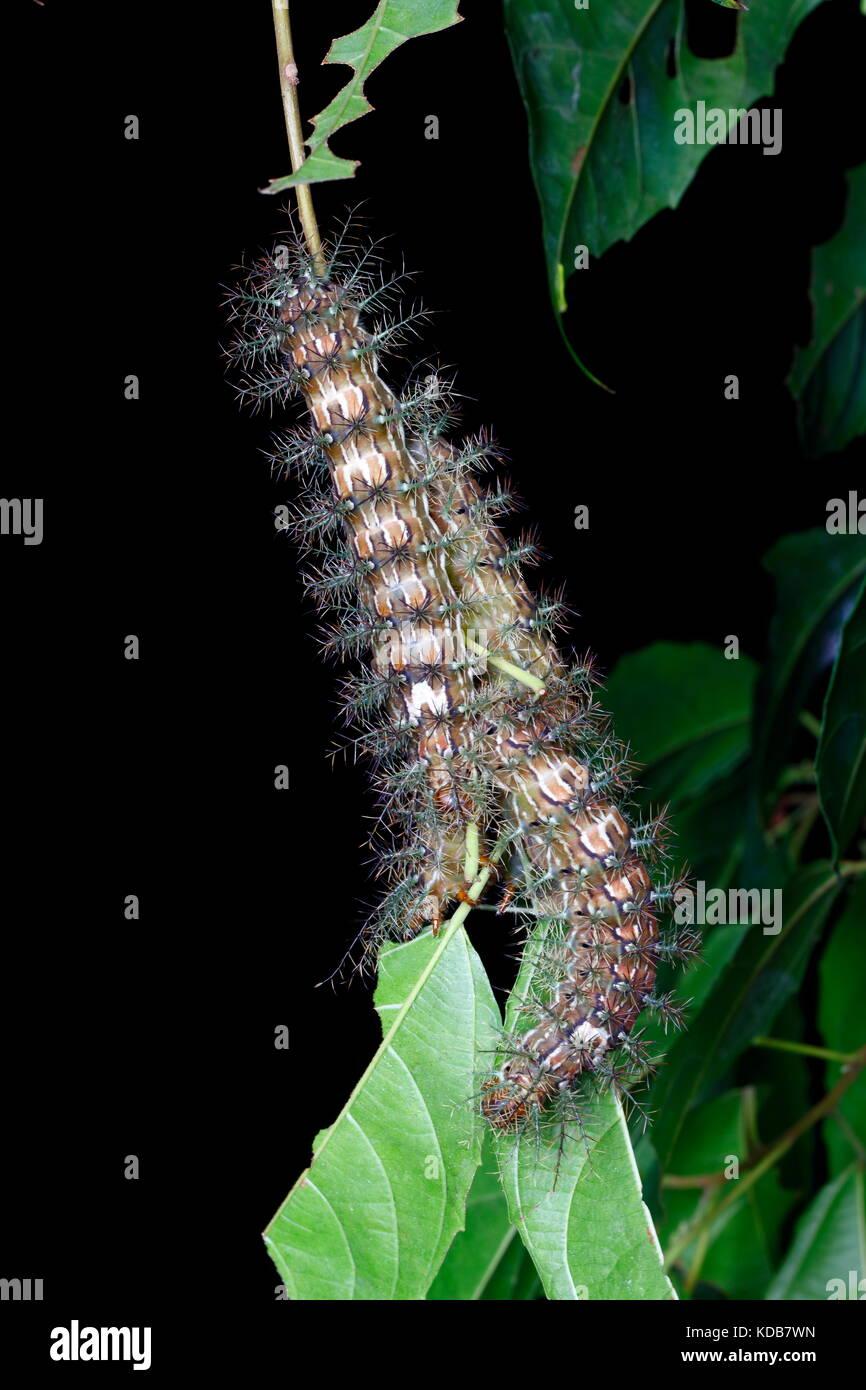**Lonomia obliqua**, commonly known as the **blanket worm** or **giant silkworm moth caterpillar**, is a species of caterpillar notorious for its potent venom. Native to South America, particularly in Brazil, this insect is a significant concern due to its potential to cause severe health issues.
#### **Identification and Habitat**
The Lonomia obliqua caterpillar is easily recognizable by its distinctive appearance. It is covered in rows of small, sharp spines that give it a “blanket” or “fuzzy” look. These spines are not just for show; they are equipped with venom that can cause serious reactions in humans. The caterpillar is typically found in the tropical forests and woodlands of South America, where it feeds on a variety of host plants.
#### **Toxicity and Health Risks**
The venom of Lonomia obliqua is highly toxic and can have dangerous effects. The primary risk associated with this caterpillar is its ability to cause a condition known as disseminated intravascular coagulation (DIC), a severe bleeding disorder. This condition disrupts the blood’s ability to clot, leading to internal bleeding, excessive bleeding from minor injuries, and, in extreme cases, can be life-threatening.
Symptoms of poisoning can include:
- **Severe skin rashes**
- **Painful itching**
- **Excessive bleeding**
- **Nausea and vomiting**
- **Abdominal pain**
- **Fever**
These symptoms typically appear shortly after contact with the caterpillar, making prompt medical attention crucial.
#### **Prevention and Treatment**
Avoiding direct contact with Lonomia obliqua is the best way to prevent harm. If handling the caterpillar, it is essential to wear protective gloves and avoid touching the spines. If contact occurs and symptoms of poisoning develop, it is critical to seek medical help immediately. Treatment may involve managing symptoms and, in severe cases, using specific antivenoms or blood products to address the bleeding disorder.
#### **Conclusion**
Lonomia obliqua serves as a stark reminder of the potent defensive mechanisms that some caterpillars have evolved. While it adds to the rich biodiversity of South America’s forests, it also poses a serious risk to those who come into contact with it. Understanding and respecting these creatures, and knowing how to handle them safely, can help mitigate the risks associated with this dangerous blanket worm.

